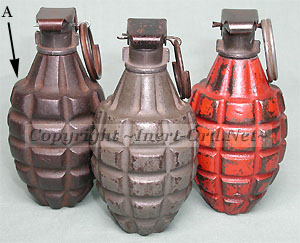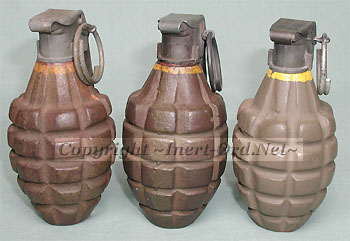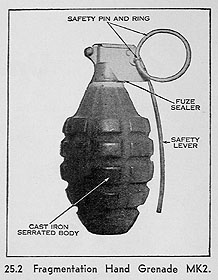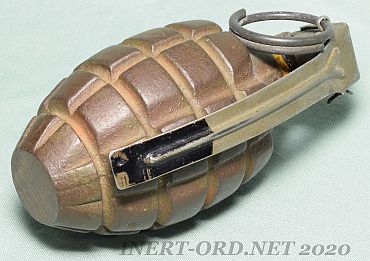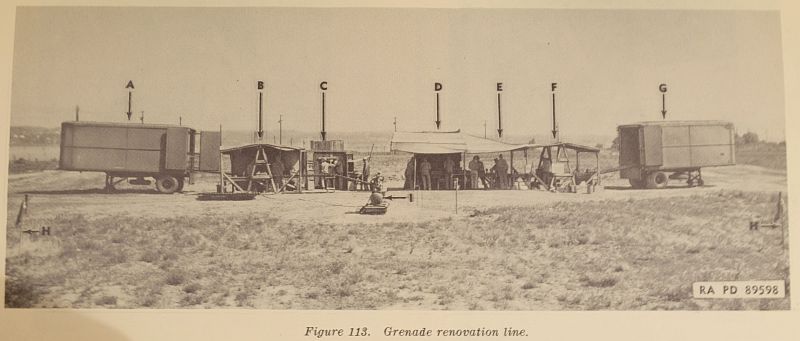
The most recognized hand grenade design used by the U.S. Army from 1918 up through the 1960's. The Mk.II (a.k.a Mk.2) is arguably the most sought after piece of ordnance for American militaria collectors.
While there is much available documentation about the specific details of this grenade, the attempt here is to provide a simple side-by-side presentation of outward physical features as it evolved over its 45+ year lifetime. Hopefully something of use to those new to the subject, and entertaining for the advanced collector as well.
(Some of these observations are not in agreement with other published data. My humble observations and conclusions.)


Overview
The Mk.II hand grenade was born at the end of WWI, the child of the failed Mk.I design , when the basic lemon shaped body style of 40-segments in 8-columns of 5-rows with a grooved neck was established.
Shortly after, the body was further modified to the familiar shape which remained outwardly more or less the same for the rest of its service life.
As a starting reference, some subtle differences between the first Mk.II body (left) and its immediate successor (right) are worth noting:
A) The base was widened. The first Mk.II body had a very narrow base, just slightly wider than the fill plug.
B) There is a measurable difference in the overall height of the body. It seems later designs are about 0.08" shorter.
C) The "shoulder" profile is more angular, although this varies in degree.
D) Segment grooves tend to be wider and deeper, but there are exceptions.
